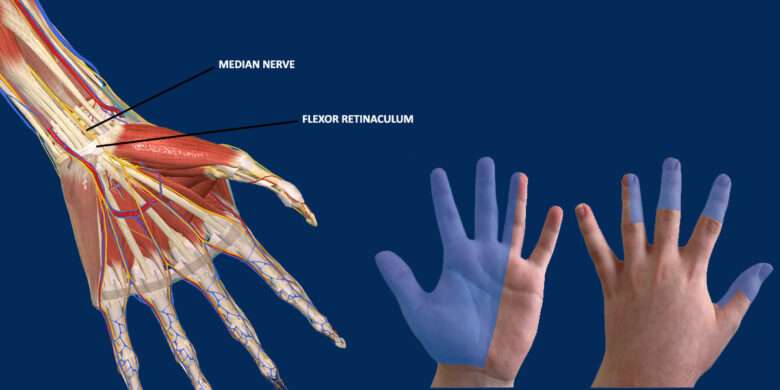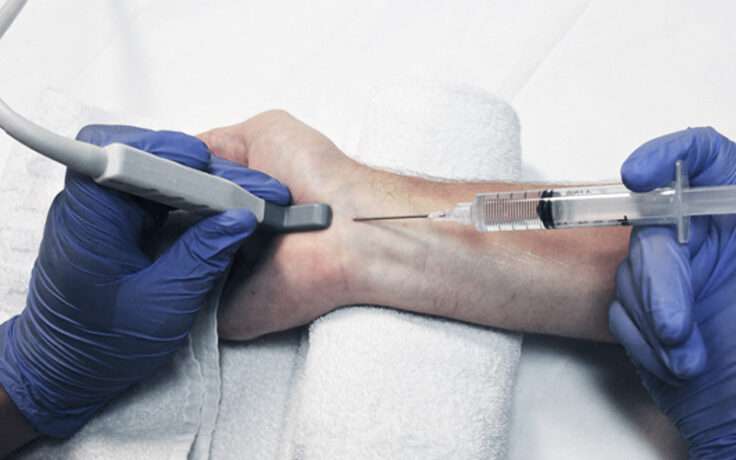In our fast-paced digital age, where keyboards and smartphones have become ubiquitous, the prevalence of conditions such as carpal tunnel syndrome (CTS) has increased significantly. This article aims to provide a comprehensive overview of what carpal tunnel syndrome is, as well as the causes, symptoms, diagnosis and treatment options available for this widespread condition.
Carpal tunnel syndrome (CTS) is a condition that occurs when the median nerve, an important nerve in the hand, is compressed as it passes through the carpal tunnel – a narrow passageway in the wrist surrounded by bone and ligaments. Compression of this nerve can be caused by a number of factors, often related to repetitive hand and wrist movements. This compression can cause a variety of uncomfortable symptoms and affect your ability to perform everyday tasks.

An understanding of the causes and symptoms of CTS is essential for early detection and effective treatment.
Repetitive hand movements: Performing repetitive tasks such as typing, assembly line work, or prolonged use of hand tools can contribute to the development of CTS. These activities can cause increased pressure on the median nerve within the carpal tunnel.
Prolonged vibration: People who regularly use vibrating tools or machinery may be at greater risk of developing CTS. Constant exposure to vibration can contribute to nerve compression and subsequent symptoms.
Medical conditions: Certain medical conditions, including rheumatoid arthritis, pregnancy, diabetes and hypothyroidism, can contribute to the development of CTS. These conditions can affect the structures within the wrist, resulting in increased pressure on the median nerve.
Anatomical factors: Some people have a naturally narrower carpal tunnel, making them more susceptible to median nerve compression. This anatomical predisposition may increase the likelihood of developing CTS.
Symptoms of carpal tunnel syndrome usually manifest gradually and may include
Pain: People with CTS may experience pain or discomfort in the hand and wrist, especially during activities that involve repetitive hand movements.
Numbness and tingling: A characteristic tingling or numbness, commonly referred to as “pins and needles,” is often felt in the thumb, index, middle and half of the ring fingers.
Weakness: Some people may experience weakness in the hand, making it difficult to grasp or hold objects.
Nocturnal symptoms: CTS symptoms can be more pronounced at night, leading to disrupted sleep patterns.
Carpal tunnel syndrome is usually diagnosed on the basis of characteristic symptoms and physical examination findings, including decreased sensation in the thumb and index, middle and half ring fingers, and thumb weakness. Nerve conduction studies and electromyography may be used to confirm the diagnosis of carpal tunnel syndrome. Ultrasound imaging is also a useful non-invasive test to diagnose carpal tunnel syndrome.
Wrist splinting: Wearing a wrist splint can help reduce symptoms by keeping the wrist in a neutral position and relieving pressure on the median nerve.
Ergonomic changes: Adjusting your workstation to minimise wrist strain and maintain proper posture can help relieve symptoms.
Weight management: Losing weight if you are overweight or obese can reduce symptoms of carpal tunnel syndrome.
Breaks and rotations: Taking frequent breaks from repetitive activities involving the use of the hand and rotating the wrist can help prevent wrist strain.
Physical therapy: Exercises prescribed by a physiotherapist can help improve flexibility and strength in the wrist and hand, which may reduce symptoms.
Medications: Nonsteroidal anti-inflammatory drugs (NSAIDs), such as aspirin, ibuprofen or naproxen sodium, and oral corticosteroids can help reduce inflammation and swelling and relieve stress on the median nerve. However, oral corticosteroids are not considered to be as effective as corticosteroid injections.
Corticosteroid injections: Injecting a corticosteroid, such as cortisone, into the carpal tunnel may relieve pain and inflammation. Local corticosteroid injections have been shown to result in greater clinical improvement after one month compared with a placebo.

Surgery may be recommended for patients with persistent or severe symptoms after trying non-surgical options. There are two types of carpal tunnel surgery: open surgery and endoscopic surgery.
Carpal tunnel syndrome is a common condition that can have a significant impact on daily life, particularly for those who perform repetitive hand movements. Early recognition of symptoms and appropriate management are essential for effective treatment. Whether through lifestyle changes or surgical intervention, seeking timely medical advice can help individuals regain comfort and functionality in their hands. If you suspect you may be experiencing symptoms of carpal tunnel syndrome, consult a healthcare professional to explore appropriate treatment options tailored to your specific needs.